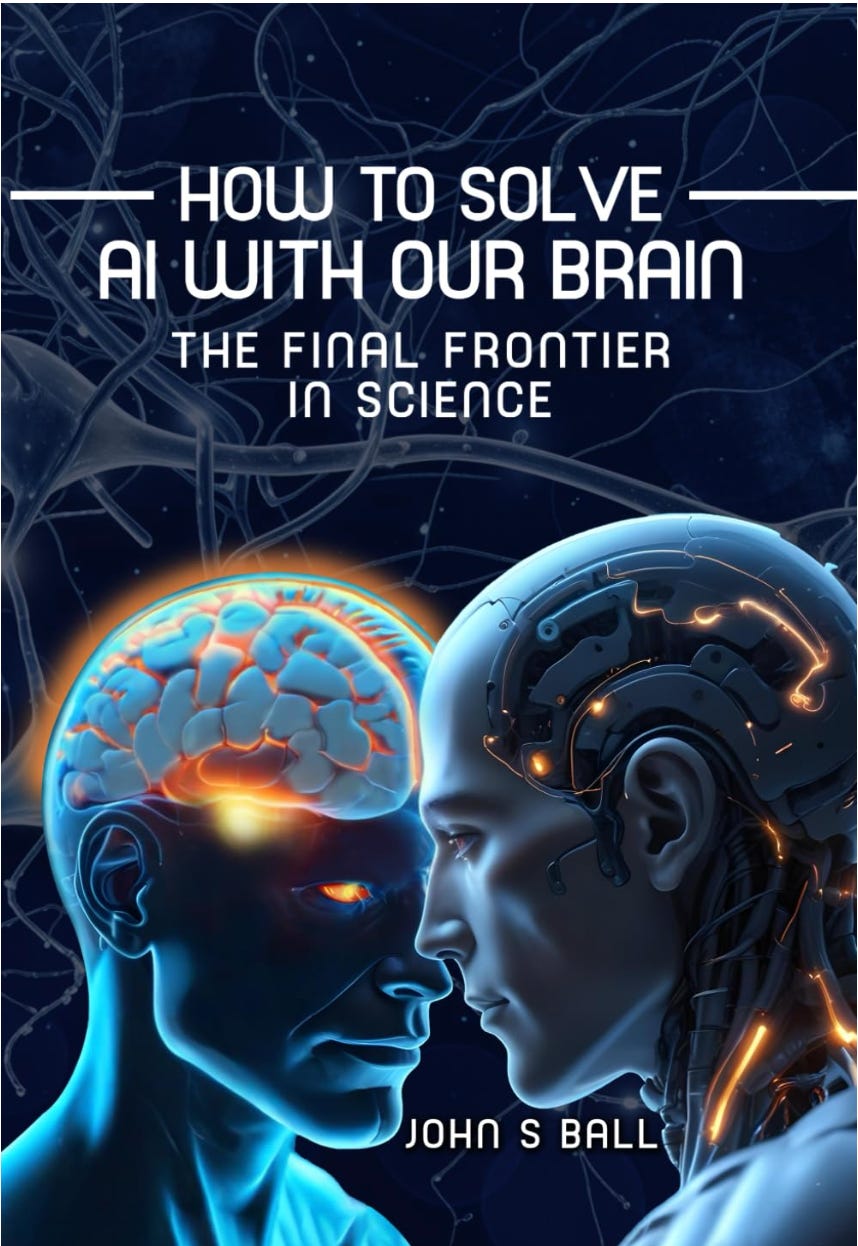
It’s great to meet enquiring people in a relaxed setting. As an author there is no better way to set that up than talking about your book at a library. In the case of a non-fiction book, the entertainment value of the topic may best be achieved by avoiding too much technical detail, while still explaining why the topic is interesting to us all.
I was surprised at this meeting to also reconnect with my idol’s wife from my days as an IBM engineer in Sydney. More on that in a moment.
The event
The event was just a standard author talk - 45 minutes or so discussing AI, brains and linguistics, followed by Q&A. I love the topic and explaining what I know. The questions are always an opportunity to rethink what’s important to the audience. This event was no exception.
Here’s a link to the full recording of the event (click).
My main observation from the meeting was near the end when I was discussing the AAAI (The Association for the Advancement of AI) and their survey of AI researchers in which the survey showed 75% of those experts didn’t see today’s AI on a path to AGI (human-emulating intelligence). Members of the audience were really keen to see that addressed, since better ideas should be pursued to meet our collective goals!
Discussing my hero, Ken Trowell
At the start of the talk, Jean Trowell reintroduced herself. I hadn’t seen her since we ran into her and her husband Ken maybe a decade ago at the Terrey Hills Tavern in Sydney. Ken, a colleague of mine at IBM, had passed away several years ago and my memories of him were as an idol — someone who showed how much an individual can learn and teach!
Ken was the guy that was known for helping IBM solve key System/370 XA architecture problems in which a CPU sends messages to disk drives that then respond when the disk is ready to perform the operation requested. There can be a number of channels to reconnect on, and many disks in the system. It was a very complex problem to solve that I hoped I could be able to deal with one day.
Other than being a wealth of information and having an ability to work day after day with only a few hours to get some sleep, I remember one of my proudest moments while attending one of his lectures. He asked the question about how a selective reset is initiated from the CPU to a device in some error state. I answered something like “raise select out” while dropping “op out.” Something like that, but it was 30 years ago! Ken asked me how I could possibly know that. Well, that’s my proudest moment for him to ask.
My most unpleasant moment took place after that. I was teaching his disk subsystem course to some of the top engineers in the country. It was the third day on DASD fast-write that allows a CPU to write to a disk without waiting for the disk rotation. Anyway, Ken came into the room just at a crucial moment and I blanked on an aspect of how it worked. So with considerable embarrassment, I sent the class for a coffee and before the next course, spent many hours reading and learning the topic in detail. Ken gave me some tough feedback, but it was good motivation for me to avoid that ever again.
The next time I ran the course, at about the same time on day three, Ken again turned up. I nailed the explanations this time, and Ken quickly left. Success!
My point is that we can all do more than we expect and learn a lot more than we think. It takes some work, but if it’s your area of passion, why not keep pushing for improvement?
My final thoughts are that Ken would have probably enjoyed talking to his fellow countryman, Alan Turing, who is another of my heroes. I suspect both would have shared similar intensity for technical challenges.
Conclusion
Today’s substack is focused on my talk at a library in Sydney. Many people are excited at the prospect of vastly improve AI services, and yet today’s audience were disappointed not to see the best ideas being pursued, while being told that everything will change soon because of AGI!
Do you want to get more involved?
If you want to get involved with our upcoming project to enable a gamified language-learning system, the site to track progress is here (click). You can keep informed by adding your email to the contact list on that site.
Do you want to read more?
If you want to read about the application of brain science to the problems of AI, you can read my latest book, “How to Solve AI with Our Brain: The Final Frontier in Science” to explain the facets of brain science we can apply and why the best analogy today is the brain as a pattern-matcher. The book link is here on Amazon in the US.
In the cover design below, you can see the human brain incorporating its senses, such as the eyes. The brain’s use is being applied to a human-like robot who is being improved with brain science towards full human emulation in looks and capability.






